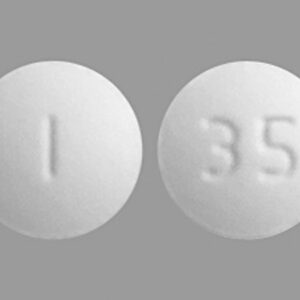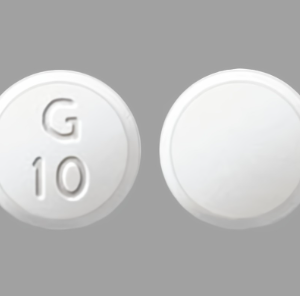Delivery Method: VIA UPS and Electronic Mail Reference #: CBER 25-710632 Product: Biologics Recipient:
Recipient Name
Vishvanath C. Karande
Recipient Title
President and Medical Director
InVia Fertility Specialists, PLLC
1585 Barrington Rd Ste 406
Hoffman Estates, IL 60169
United States
vkarande@inviafertility.com Issuing Office: Center for Biologics Evaluation and Research
United States
WARNING LETTER
CBER 25-710632
June 13, 2025
Dear Dr. Karande:
During an inspection of your firm, InVia Fertility Specialists, PLLC 1585 Barrington Rd Ste 406, Hoffman Estates, IL 60169, conducted between January 28, 2025, and February 5, 2025, the United States Food and Drug Administration (FDA) documented significant violations from the regulations for human cells, tissues, and cellular and tissue-based products (HCT/Ps) set forth in Title 21, Code of Federal Regulations (CFR) Part 1271 (21 CFR 1271) and issued under the authority of Section 361 of the Public Health Service Act (42 U.S.C. § 264).
The observations documented on the Form FDA-483, List of Inspectional Observations (FDA 483), were presented to and discussed with Victoria D. Meagher, Donor Coordinator at the conclusion of the inspection, and following FDA’s review, your violations. include, but are not limited to, the following:
1) Failure to test a specimen from an anonymous or directed reproductive donor of cells or tissue, whether viable or non-viable, for evidence of infection due to relevant communicable disease agents [21 CFR 1271.85(a)]. For example, anonymous oocyte donor (b)(6) was not tested for human immunodeficiency virus, type 1 (HIV-1), hepatitis C virus (HCV), and hepatitis B virus (HBV) by the (b)(4) method. HCT/Ps were recovered from this donor on April 15, 2024, and transferred to a recipient.
2) Failure to screen a donor of reproductive cells or tissue by reviewing the donor’s relevant medical records for risk factors for, and clinical evidence of, relevant communicable disease agents and diseases [21 CFR 1271.75(a)(1)]. FDA’s regulations at 21 CFR 1271.3(s) define the term “relevant medical records” to include a current medical history interview and a current report of the physical examination of a living donor. For example:
a. The records for anonymous oocyte donor (b)(6) lack documentation of a medical history interview. Oocytes were recovered from this donor on (b)(6), and the resulting HCT/Ps were transferred to a recipient on (b)(6).
b. The records for directed semen donor (b)(6) lack documentation of a medical history interview and a report of the physical examination of the donor. Semen was recovered from this donor on (b)(6), and was used to fertilize oocytes. One resulting HCT/P was transferred to a recipient on May 9, 2024.
c. The records for anonymous oocyte donor (b)(6) lack documentation of a medical history interview. Oocytes were recovered from this donor on (b)(6), and the resulting HCT/Ps were transferred to a recipient on August 22, 2023, September 26, 2023, and May 14, 2024.
d. The records for directed semen donor (b)(6) lack documentation of a medical history interview and a report of the physical examination of the donor. Semen was recovered from this donor on (b)(6), and was used to fertilize oocytes. One resulting HCT/P was transferred to a recipient on August 16, 2024.
3) Failure to determine whether a donor is eligible based upon the results of donor screening in accordance with 21 CFR 1271.75 and donor testing in accordance with 21 CFR 1271.80 and 21 CFR 1271.85 [21 CFR 1271.50(a)]. For example, from January 2023 through November 2024, you did not determine and document the eligibility of approximately six anonymous oocyte donors and four directed oocyte donors. Oocytes were retrieved from these donors and fertilized. These resulting HCT/Ps were transferred to recipients.
4) Failure to prominently label an HCT/P from an ineligible directed reproductive donor with the Biohazard legend shown in 21 CFR 1271.3(h) and the statements, “WARNING: Advise patient of communicable disease risks,” and “WARNING: Reactive test results for (name of disease agent or disease)” [21 CFR 1271.65(b)(2)]. For example, HCT/Ps from directed semen donors (b)(6) and (b)(6) were not labeled with the appropriate statements although the donors tested reactive for relevant communicable disease agents.
5) Failure to establish and maintain procedures for all steps performed in testing, screening, determining donor eligibility, and complying with all other requirements of Subpart C “Donor Eligibility” in 21 CFR Part 1271.45-1271.90. “Establish and maintain” means define, document, and implement; then follow, review, and as needed, revise on an ongoing basis [21 CFR 1271.47(a)]. For example, your procedures fail to include the requirement for a physical examination of a donor, complete relevant communicable disease testing requirements, and the determination and documentation of the donor eligibility by a responsible person.
The violations identified above are not intended to be an all-inclusive list of violations at your facility. It is your responsibility to ensure that your establishment complies with all applicable federal regulations. You are responsible for reviewing your firm’s operations, including firms within the same organization, as a whole to ensure that you are in compliance with the law.
We acknowledge receipt of your initial letter, dated February 25, 2025, responding to the inspectional observations. We have reviewed the corrective actions outlined in the response, which do not include sufficient detail to enable us to assess the adequacy of the response. A previous inspection of your facility conducted in September 2022 resulted in two violations that were documented during again the current inspection (January 28, 2025 – February 5, 2025). This indicates that your corrective actions were either not implemented or were not effective to prevent the recurrence of the previously identified violations. The Agency continues to have serious concerns about your establishment’s ability to maintain compliance with 21 CFR Part 1271. We also acknowledge receipt of your letter dated April 1, 2025, which is currently under review.
Please note that if you still have oocytes and/or semen in storage from donors whose screening and/or testing was not completed in accordance with 21 CFR Part 1271, FDA considers the donor eligibility determinations to be incomplete for these donors. For example, this includes donors who were not appropriately tested for relevant communicable disease agents and diseases and/or who were not appropriately screened for relevant communicable disease risk factors. Therefore, as required by 21 CFR 1271.60(a), you must keep these HCT/Ps in quarantine.
Should the need arise in the future to remove any of these HCT/Ps from quarantine, either for use in your own establishment or for transport to another establishment, you may request an exemption or alternative from a requirement in Subpart C, 21 CFR Part 1271, as specified in 21 CFR 1271.155. Additional information can be found at Exemptions and Alternatives | FDA. The email address for submissions is HCTPExemptions@fda.hhs.gov.
Please note that 21 CFR 1271.155 requires that you provide justification for use of HCT/Ps from these donors, as well as information on how you have mitigated the risk consistent with the goals of protecting the public health and/or preventing the introduction, transmission, or spread of communicable diseases. Before any of these HCT/Ps can be removed from quarantine, the request must be granted by FDA.
If you still have embryos in storage for which the donor eligibility requirements under 21 CFR 1271, Subpart C are not met, please note that FDA considers the donor eligibility determinations to be incomplete for these donors. Therefore, as required by 21 CFR 1271.60(a), you must keep these HCT/Ps in quarantine. Should the need arise in the future to remove any of these HCT/Ps from quarantine, either for use in your own establishment or for transport to another establishment, you may release these HCT/Ps from quarantine (21 CFR 1271.90(b)) provided they are labeled in accordance with the applicable regulations at 21 CFR 1271.90(c).
You should take prompt action to correct any violations addressed in this letter and prevent their recurrence. Failure to promptly correct any violations may result in regulatory action being initiated by FDA without further notice.
We request that you respond in writing within fifteen (15) working days from your receipt of this letter, outlining the specific steps you have taken or plan to take to correct any violations, including an explanation of how you plan to prevent them, or similar violations, from occurring again. Additionally, include any documentation necessary to show that correction has been achieved. If you believe that your products are not in violation of the law, include your reasoning and any supporting information for our consideration. If you cannot complete all corrective actions within fifteen (15) working days, please explain the reason for your delay and the timeframe within which remaining corrections will be completed.
Your written response should be sent to the following address: U.S. Food and Drug Administration, Center for Biologics Evaluation and Research, Document Control Center, 10903 New Hampshire Avenue, WO71-G112, Silver Spring, MD 20993-0002. Please also email your response to CBERDCMRecommendations@fda.hhs.gov.
If you have any questions regarding this letter, please contact CBER’s Division of Case Management at CBERDCMRecommendations@fda.hhs.gov. Please be advised that only written communications are considered official.
Sincerely,
/S/
Melissa J. Mendoza
Director
Office of Compliance and Biologics Quality
Center for Biologics Evaluation and Research








